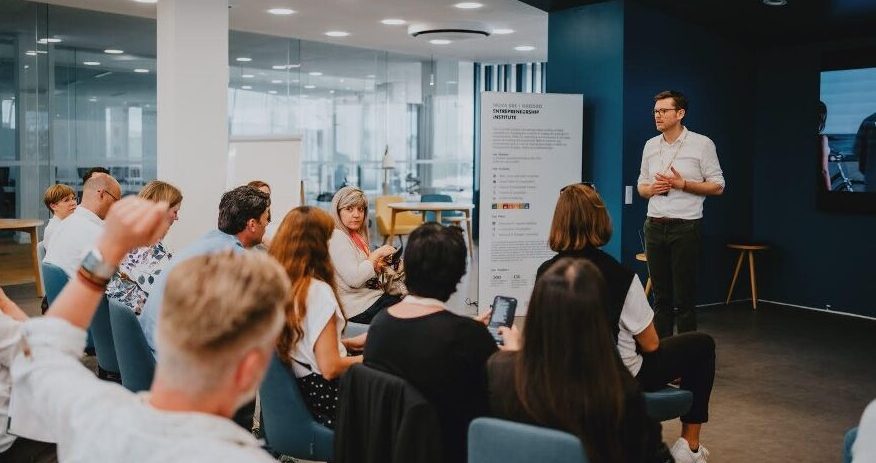Introduction
In the realm of planning and strategy formulation, back casting room stand as indispensable asset, providing organizations with a structured approach to achieving their goals. This comprehensive guide delves into the nuances of back casting rooms, elucidating their significance, structure, setup, and operational strategies.
Understanding the Concept of Back Casting Rooms
At its core, a back casting room is a dedicated space where organizations engage in reverse planning. Unlike traditional forecasting methods that extrapolate from current data to predict future outcomes, back casting involves envisioning a desired future state and then working backward to determine the steps necessary to reach that goal. This approach fosters a proactive mindset, encouraging organizations to shape their future rather than merely react to it.
Importance of Back Casting in Planning

Back casting serves as a potent tool for strategic planning, offering several distinct advantages. By starting with a clear vision of the desired outcome, organizations can align their actions and resources more effectively, reducing the likelihood of wasted effort or misdirected investments. Additionally, back casting promotes innovation and creativity, encouraging stakeholders to explore unconventional solutions and challenge existing assumptions.
Exploring the Structure of Back Casting Rooms
Layout and Design Considerations
The layout of a back casting room plays a crucial role in facilitating productive collaboration and idea generation. Ergonomic furniture, ample workspace, and effective lighting are essential elements to consider. Moreover, the integration of technology, such as digital whiteboards and collaborative software, can enhance communication and information sharing among participants.
Equipment Requirements
Equipping a back casting room with the right tools is paramount to its effectiveness. Whiteboards, markers, projectors, and brainstorming aids are standard fixtures. Additionally, access to relevant data and analytics tools empowers participants to make informed decisions based on real-time insights.
Setting Up Your Back Casting Room
Location Selection
Choosing the optimal location for a back casting room requires careful consideration of factors such as accessibility, noise levels, and proximity to key stakeholders. Ideally, the room should be easily accessible to all participants and provide a quiet, distraction-free environment conducive to focused work.
Designing the Layout
When designing the layout of a back casting room, prioritizing flexibility and functionality is essential. Configurable furniture arrangements, modular workspace solutions, and adaptable technology infrastructure enable seamless transitions between different phases of the planning process.
Maximizing Productivity in Your Back Casting Room
Time Management Strategies
Effective time management is critical to the success of any back casting endeavor. Techniques such as time blocking, prioritization, and task delegation help participants stay organized and focused on achieving their objectives within the allotted timeframe.
Team Collaboration and Communication
Promoting open communication and collaboration among team members is essential for harnessing the collective intelligence of the group. Utilizing digital tools for file sharing, video conferencing, and collaborative document editing facilitates real-time collaboration and ensures that everyone remains aligned with the overarching goals.
Enhancing Efficiency Through Technology

Automation and Robotics
The integration of automation and robotics technology can streamline repetitive tasks, improve accuracy, and accelerate the pace of work. From data analysis and processing to physical tasks such as material handling and assembly, automation technologies offer myriad opportunities to enhance efficiency and productivity.
Digital Solutions for Data Management
Managing vast amounts of data effectively is a key challenge in the planning process. Cloud-based platforms, data visualization tools, and analytics software enable organizations to collect, analyze, and interpret data more efficiently, empowering decision-makers with actionable insights and driving informed strategic choices.
Troubleshooting Common Issues
Addressing Equipment Malfunctions
Equipment malfunctions can disrupt workflow and impede progress. Having contingency plans in place, maintaining a stock of spare parts, and training staff on basic troubleshooting techniques can help minimize downtime and ensure that any issues are resolved swiftly and effectively.
Dealing with Workflow Bottlenecks
Identifying and addressing workflow bottlenecks is essential for maintaining momentum and preventing delays. Analyzing process flows, identifying inefficiencies, and implementing process improvements based on lean principles enable organizations to optimize their workflows and maximize efficiency.
Implementing Continuous Improvement
Feedback Mechanisms
Gathering feedback from participants is invaluable for identifying areas for improvement and refining the back casting process. Encouraging open dialogue, soliciting suggestions for improvement, and implementing changes based on feedback foster a culture of continuous improvement and innovation.
Regular Evaluation and Review
Conducting regular evaluations and reviews of the back casting process enables organizations to track progress, assess performance against key metrics, and identify areas for enhancement. By leveraging performance data and stakeholder feedback, organizations can iteratively refine their approach and drive continuous improvement over time.
Ensuring Safety and Compliance
Occupational Health and Safety Regulations
Creating a safe working environment is paramount to the well-being of participants. Adhering to relevant occupational health and safety regulations, conducting regular risk assessments, and providing appropriate safety training and equipment are essential steps in ensuring compliance and minimizing the risk of accidents or injuries.
Equipment Maintenance and Inspection
Regular maintenance and inspection of equipment are necessary to ensure its proper functioning and longevity. Implementing a comprehensive maintenance schedule, conducting routine checks, and addressing any issues promptly help prevent downtime and optimize the performance of the back casting room.
Conclusion
In conclusion, back casting rooms represent a cornerstone of effective strategic planning, offering organizations a structured approach to envisioning and shaping their future. By understanding the principles of back casting, optimizing the design and setup of their back casting rooms, and leveraging technology and best practices to maximize productivity and efficiency, organizations can unlock new opportunities for innovation and growth.
FAQs (Frequently Asked Questions)
1.What is a back casting room, and how does it differ from other planning spaces?
A back casting room is a dedicated space for reverse planning, focusing on achieving future goals by working backward from a desired outcome. Unlike traditional planning rooms, it emphasizes starting from the end goal and determining the steps needed to reach it.
2.What are some essential tools and equipment needed for a back casting room?
Essential tools may include whiteboards, markers, projectors, computers with planning software, ergonomic furniture, and safety equipment such as goggles and gloves.
3.How can technology enhance productivity in a back casting room?
Technology can automate repetitive tasks, provide real-time data analysis, improve communication among team members, and facilitate seamless collaboration, thereby enhancing overall productivity.
4.What safety measures should be implemented in a back casting room?
Safety measures may include regular equipment maintenance, employee training on safe handling procedures, adherence to occupational health and safety regulations, and the provision of appropriate safety gear.
5.How can organizations ensure continuous improvement in their back casting processes?
Organizations can ensure continuous improvement by soliciting feedback from team members, conducting regular evaluations of performance metrics, identifying areas for enhancement, and implementing necessary changes to optimize workflow and productivity.
Read more articles on Digitalnewsalerts.



